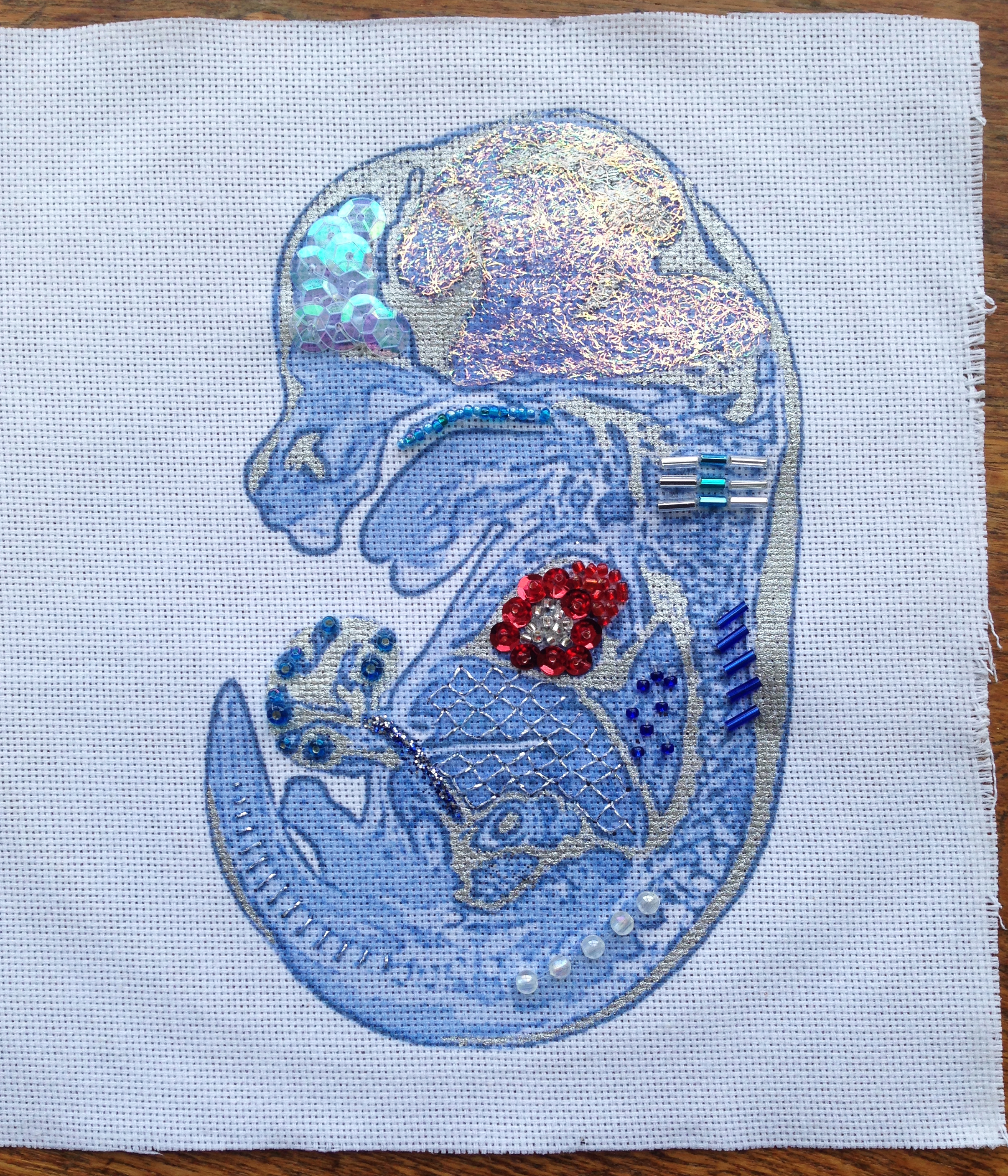Birth and cell death may go hand in hand
Altering the timing of birth changes patterns of cell death in mouse brains
NIH Image Gallery via Flickr
Considering how fragile the brain is, it might sound absurd that when forming one, over half of the neurons that are initially created end up dying during the first years of development. This is usually done through apoptosis, or Programmed Cell Death (PCD), a mechanism in which the cell basically dies from within. Although neuroscientists have known that PCD is essential for normal development for decades now, there is a whole lot we still don’t know about that process. For example, how exactly does the brain know when to start and stop cell death? To start figuring that out, Alexandra Castillo-Ruiz and colleagues at Georgia State University posed the question: does birth trigger cell death?

Embroidered image of a mouse embryo.
NIMR London via Flickr.
To answer that, the scientists manipulated the timing of the birth of mice — either advancing or delaying birth by one day — using different combinations of hormones. They then examined the extent of cell death in the mice’s brains. Looking at areas where cell death happens quickly after birth, the team found that advancing birth by one day also advances cell death. Interestingly, while the timing of PCD was advanced, the overall number of dead cells was actually reduced. On the other hand, delaying the birth by one day did not affect the timing of PCD, but did increase the number of dead cells.
This is the first study to link the actual process of birth to changes in cell death in the brain. While it looks only at specific areas of the mouse brain, it is still important, especially considering how often we do advance human birth dates for various reasons.